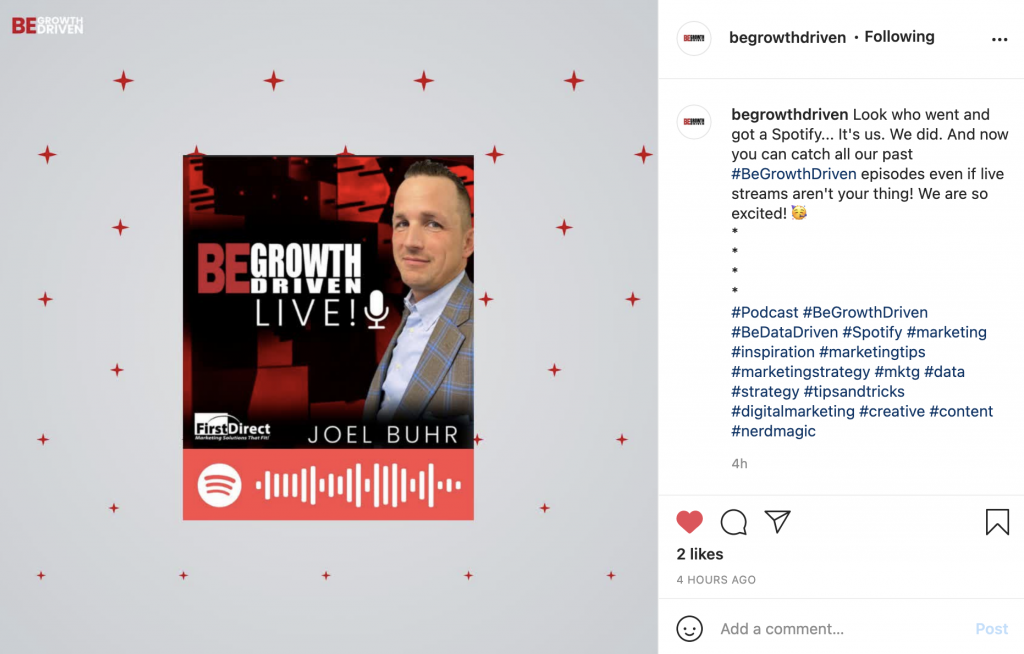Let’s Talk: Digital Display
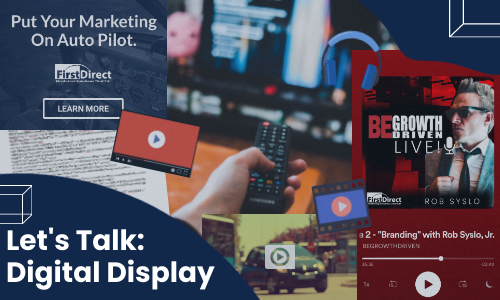
We’ve talked a lot about specific types of Digital Display Ads but what are the differences them? And how do you what type of Digital Display (Or online ad) is the best fit for your business?
What is Digital Display?
Digital Display Ads can be split into 5 main categories:
- Digital Audio Ads
- CTV (Connected TV)
- Video Ads
- Static Ads
- HTML5 Ads
What do Digital Display Ads do?
Digital Display Ads encompasses just about every type of online ad. Each type of Digital Display Ad has its own strengths and weakness. Effective campaigns are often the ones that know how to best utilize each type of ad.
Digital Audio Ads
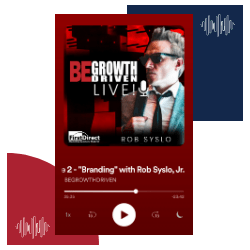
What is Digital Audio Advertising? It’s all the ads you get that are just sound. For example, any podcast, Spotify or Pandora ad is Digital Audio. It’s expected that Digital Audio Ads from just podcasts will surpass a BILLION dollars in 2021 and that the average American will spend nearly 90 minutes a day listening to streamed music or podcasts by 2022.
Digital audio ads are a great way to connect with consumers through a channel that they enjoy. And it is very cost effective, because the ad only plays if they are listening to music or a podcast.
CTV (Connected TV)

Connected TV advertising refers to ads that are delivered to internet-connected TVs – for instance, via Hulu or Roku. CTV is increasing in popularity for marketers! Consumers are embracing these platforms so more and more ad inventory is becoming available. In fact, CTV advertising spend is expected to grow from $6.94 billion in 2019 to $8.88 billion this year, a 28% increase.
The specifies depend on what you need your funnel to accomplish. Some of the processes used are A/B testing, improving user on-page experiences, usability tests, and optimizing existing content.
Video Ads
Video Advertising fits into 2 categories: The ads that play connected to streamed content, such as Youtube ads, and display ads with video content. Those are the ads that start playing a video when your cursor scrolls over it and native video ads.
Video ads are extremely effective. Video content is more eye catching and engaging than static images or text and they are easier to remember. They are great at story telling and promoting brand messaging. Studies show that almost 75% of consumers prefer Video Ads over Text Ads.
Many Video Ads on social media platforms are re-sharable like native content, which makes it easier for consumers to promote your content for you.
Static Ads
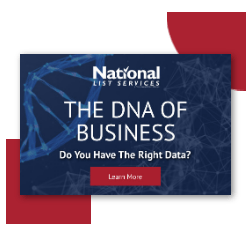
Static Display Ads are probably what you think when you think of online ads. Static Display Ads (or Banners) are the ads that are a solid image of various sizes in designated areas of a webpage or app.
Static Ads are very effective for generating general brand awareness, retargeting, drawing attention to a specific sale, targeting location based traffic, and much more!
HTML5 Ads
HTML5 Ads are attention-grabbing, interactive (or responsive) ads optimized for Google.
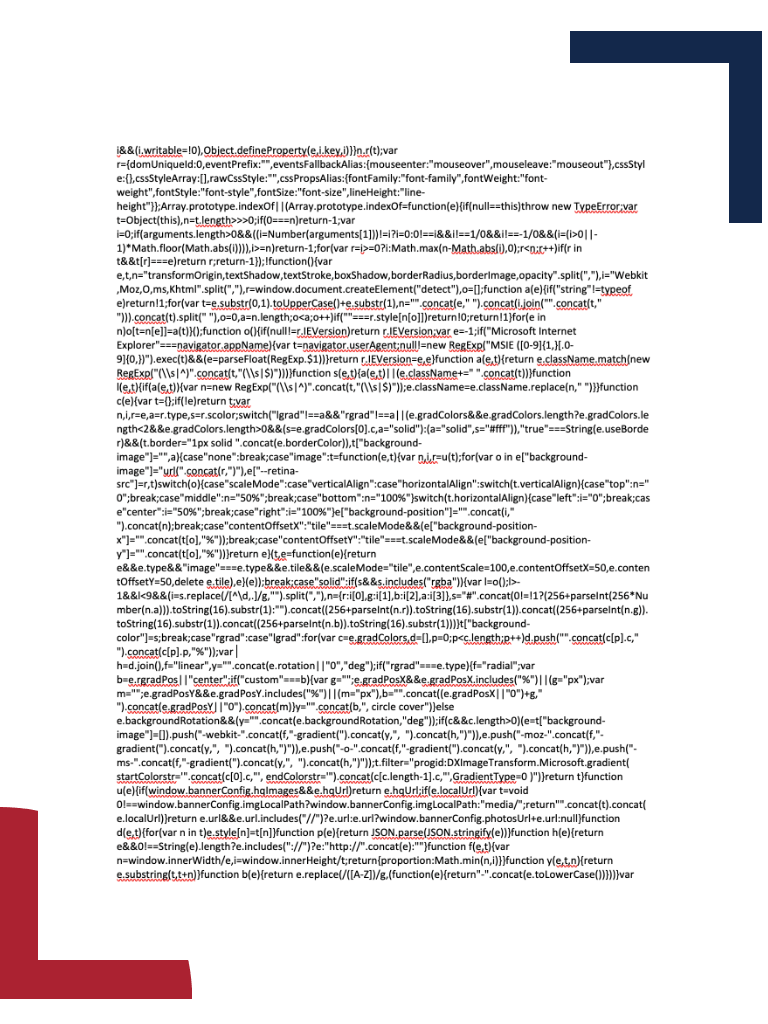
HTML5 allows a lot of flexibility and creativity with ads content and formatting. Video, text, imagery, and audio files can all be used. More imaginative ads create more engagement. HTML5 ads tend to have much hight click-through rates than static ads!
HTML5 ads are rendered in code. You are sent to code itself as well as the MP4 video.
What’s the best fit for you?
Every business and situation is different! No one type of ad is best for each business but usually a combination of the 5. Online advertising can be touchy so it’s important to have a strategy.
What’s your favorite type of Digital Display Ads to use for your business?
What Do You Need to Create a Successful Podcast?
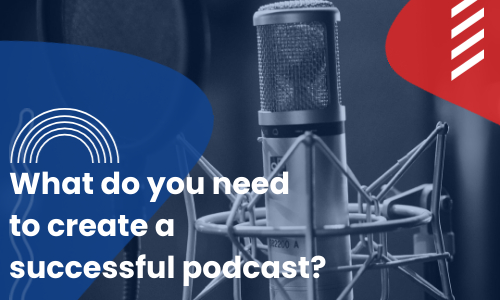
Nearly 51% of adult Americans listen to podcasts!
Here’s the steps you need to create your own successful podcast!
Step One: Get Over Your Fear!
The first step to success is to just start! There’s a lot of fears people have about starting a podcast.
“My voice sounds weird.”
“I don’t have enough technical know-how.”
“The equipment is expensive.”
“A podcast is time consuming.”
Chances are that once you get started, those fears will dissipate!
Step Two: What Do Want To Say?
One of the most important things about starting a new venture, like podcasting, is to have a mission. For example, our podcast, BeGrowthDriven, was started because our mission as a company is to help business grow. We wanted to connect like-minded business and entrepreneurs to share advice and recourses. That goal informs all the decisions we make about the podcast.
How to you want to help your audience or customers? What is the goal of your business? You can expand on that to create your podcast’s mission.
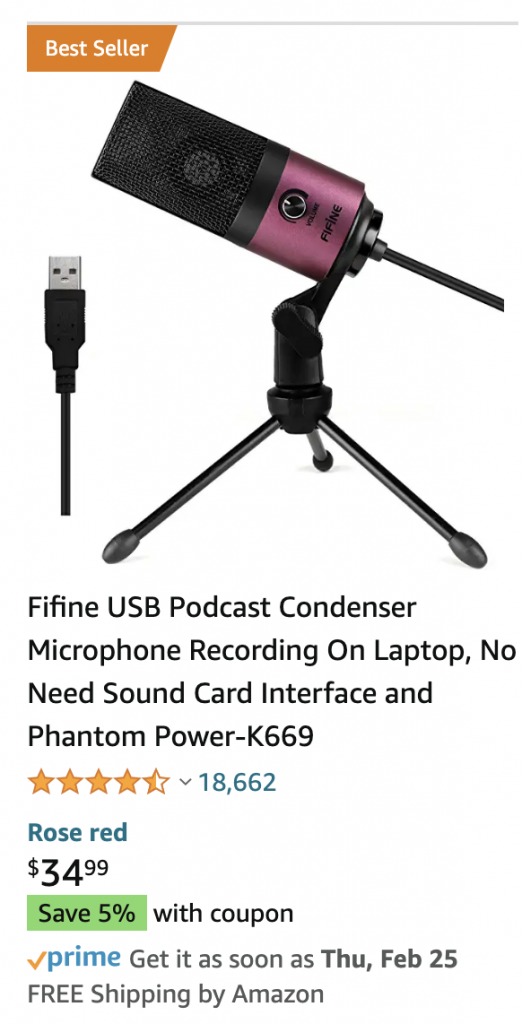
Step Three: Record Your First Episode
You don’t need expensive equipment to get started! (Though podcast mics start at like, $30 on Amazon.) Here’s what tools we have found to be helpful.
Part of recording your episode is the editing and mixing side of things. It’s totally up to you how much editing you want to do! It all depends on what you want the feel of your podcast to be.
Step Four: Publish Your Podcast
There are many directories to publish podcasts on. That big three are iTunes, Spotify, and Google Podcasts.
Doing well on iTunes/Apple Music is the goal. Around 70% of all podcast listens and downloads happen through Apple. It can be trickery to get monetarization on Apple than on Spotify or Google. So, having your podcast available on as many platforms as possible is good idea!
It’s also a good idea to publish three to five episodes at launch to give your new listeners something to listen to.
Step Five: Promote, Promote, Promote
Podcasting has been around for a long time so there are many recourses and tools available for promoting (or learning how to promote) your podcast. Here’s some tips and tricks
- Tap into your guest’s audience
Chances are if they are a good fit to be a guest on your podcast, there audience could also benefit form your content. Make it easy for your guest to share out pull quotes, images, and links from their episode.
- Use social media.
This is kinda a no brainer. Podcasts can be slip into so many different types of content that is easy to post them across many different platforms. Pull quotes do great on Instagram, Facebook, and LinkedIn. Links can be shared on twitter and Facebook. Twitter also has a great SoundCloud integration you can use.
Social media can be used to promote the episode ahead of time as well as sharing past highlights. Social media also is great way to connect with fans and listeners one personal level and add another channel for them to interact with you.
Step Six: Repurpose Content
Podcast content can be repurposed into many other different types of content. We’ve already talked about pull quotes and highlight clips, there’s way more things you can do. For one thing, it’s common place to film the recording of the podcast. That video can be put on YouTube. And video highlights can be put on social media. Putting the video on YouTube also gives you some accessibility features such as closed captioning. Since YouTube is owned by Google, videos on YouTube boost your overall brand SEO which as far-reaching benefits.
Another helpful way to repurpose podcast content is to have the podcast transcribed. If you don’t have time to do that yourself, (understandable: it’s time consuming) companies like Rev.com or Fiverr offer cheap transcription services. Once your podcast is transcribed, it can be used as blog content to make it accessible on another channel and boost SEO.
Step Seven: Get Featured On Other Podcasts!
A great way to promote your podcasts and reach new audiences is to be a guest on other podcasts! The podcast community is well connected and worth tapping into.
Do you have a podcast? We want to hear all about it!
Should You Repurpose Content?
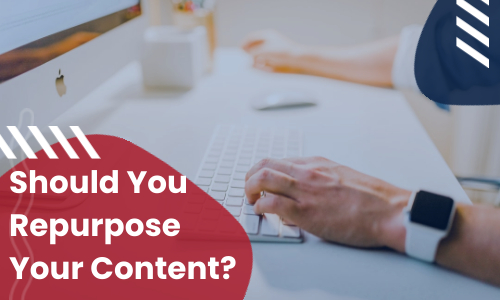
So, should you repurpose content? Yes! Recycling or repurposing content has a lot more advantages than just saving time. (Although that is very helpful. As the old adage says… Time is Money! 💰 )
What does it mean to repurpose or recycle content? There are a couple ways to do it. One way is to repost or reshare the content as is. A lot of companies do this with TBTs or just highlighting past content. Another way to repurpose content is to take old content and use it as an outline for new content.
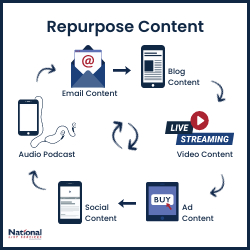
For example, once a Live Video stream is over, the audio can be published as a podcast on platforms like Spotify or Apple Music. Video clips of highlights can be repurposed into social content or ads. As well as pull quotes. The transcript can be turned into a blog article.
(This article is based off an outline for a live video, that was in turn, based off another blog article, that was itself based off one of Live Roundtables. Content can generate other content.)
What’s Your Message?
If you have been making content for a while, you probably have a good idea of what your message is. So, no matter what you do, some part of everything you create will be a reiteration of something you’ve said better before. That’s a good thing! Constantly adding drastically different messaging can create a confusing overall brand message. Your brand pillars and values aren’t going to change so your general message probably won’t either.
For example, the foundation for everything we do is using accurate data to create effective marketing. All the content we create is in some way or another connected to that. Therefore, it makes sense that we reiterate ideas and messages. That doesn’t mean that we don’t have anything new to say because there are always new ways of approaching information. The world around us, as well as technology and industry standards are always changing. There are always new things that can be added. Adding information keeps your messages up to date. Up-to-date content is more accurate and provides for value to your followers.
Your Audience Grows and Changes
Another reason to recycle content is that it gives more people an opportunity to see it. And even if someone has been following you for a long time there’s a good chance that they didn’t see the content the first time around. Social media platforms notoriously fail to consistently promote content. And we are all busy, it’s easy to miss something. And your followers might appreciate or need a piece of content now, more than they did when it was first published. Repurposing the information is a way to help your customers get the information they need.
Know What Your Customers Need
The more times goes on, the more you know about your audience’s interests. We are all constantly learning about our followers and audience. The more time goes on the more First Party Data is available. Knowing more about who your customers are can help you to understand what content they actually need. You can then reframe the information that you know would more benefit them.
Recycling Content Boosts SEO
One added benefit of repurposing content is that it boosts SEO. Search engines like to see a lot of content that revolves around a single topic. It shows a consistent brand message and purpose. A consistent brand message can indicate brand value.
What ways do you repurpose content?
Let’s Talk First Party Data
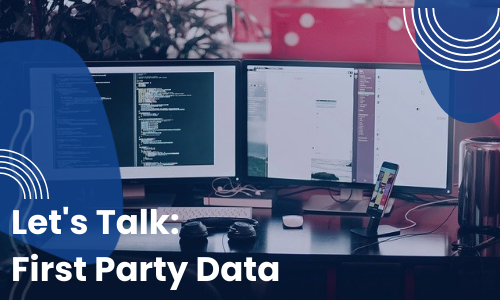
We talk about First Party Data a lot. What it is?
First party data is data that your company has collected directly from your audience which is made up of customers, site visitors, and social media followers. “First party” refers to the party that collected the data firsthand.
First Party Data is collected from the people you have the most to learn from: your current customers! That makes the data as reliable as possible.
How can you collect first party data?
You can attain first party data from your CRM, surveys and subscription-based emails or products. This is also where Google and Social Media Analytics are important.
Google Analytics has a massive list of capabilities and ways to track website data. Using tracking code, Analytics collects information about the way the website was used.
Such as:
- Time of visit
- Pages viewed
- The time spent on each page
- What browser and OS are being used
- Referring site details
- Network location and IP address.
This information can help you see where (and how) traffic is following to and through your website. Google Analytics also has a lot of other tools such as URL Builder that make it easier to track customer data.
Social media analytics are helpful for flushing out the demographics are your most engaged customers. What can you learn about customer from social media? Here’s are some things you can learn:
- What platforms your customers prefer to engage on
- What content do your customers enjoy most
- What type of campaign or advertising works for them?
- Do they have any other hobbies or interests?
- More specific customer demographics, such as age or gender
It’s also super important to connect as many touch points to your customers as possible. The more ways you have to interact with the customer the more likely they are to become a repeat loyal customer. Think about the companies you follow on social media. Have you bought from them? More than once? Are you loyal to them? Do you agree with their mission and goals? Following companies on social media feels like a personal one-on-one connection and generates loyalty.
Organization is Key
The next step of having/using first party data is organization. Having important information about your customers and leads doesn’t do much good if you can’t find it or if it’s connected properly. No matter what size your business is, having a CRM is key. The days of using a Rolodex are long gone. Now there a lot more channels of data to connect to a contact.
For example, in our CRM we keep track of more than just name, company, phone, and email. Our CRM keeps track of what social media we are connected on and any times the contact has engaged with us. We have it set up so that the CRM assigns a number value to actions a contact or lead can take, such as opening emails, clicking links, liking a post, and any orders.
How does all that information benefit us?
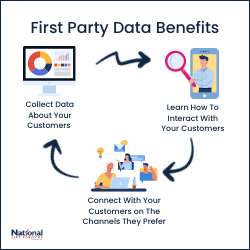
There are many ways! For one, we can use the information we have to target or retarget contacts, leads, and prospects. We can try different channels and types of touches until we find which one they respond best to. Having more than one channel connected to each contact makes multichannel campaigns possible.
The other advantage to First Party Data is that you can collect data and analytics about your customers from the channels you are using to constantly to learn more about your demographics and your customer’s buying habits. The more channels you use the easier it will be to learn about your customer. Then the more customers you have the more information you can learn about your potential target audience. You can use a Look-A-Like to build a list of potentials you can target based on information on your current customers.
What ways do use First Party Data?
Here’s how First Party Data might the key to the future cookie-less world.
Data & The Instagram Algorithm
The Instagram algorithm is the bane of some people’s existence. And yes, it is confusing since they moved from a chronological feed. It’s important to know how to best leverage the Instagram algorithm to make sure your content is being seen!

According to Instagram, they decide to show your content based on 6 factors:
#1: Interest
#2: Relationship
#3: Timeliness
#4: Frequency
#5: Following
#6: Usage
The first three are somewhat self-explanatory. Instagram shows you things based on what you’ve liked in the past. They highlight posts from people they’ve decided are close to you: people whose content you most engage with, the people who tag you, the people you DM etc. Instagram also cares about when you post. Keeping track of your analytics can give you a good idea about when the best times to post for you are.

#4 Frequency isn’t about how often you post but instead about how often interact with the app. The more often you check your Instagram feed the more likely your feed will be chronological because they are always trying to show you the newest content available. This is helpful to understand what type of Instagram users your followers are. If they don’t check the app that often, then it will be harder to have your posts seen. Building up the other 5 components to the algorithm will be all the more important.
#5 Following
Instagram assigns value to follower counts in a couple different ways. First, is simple: the more followers you have the more likely your posts will be highlighted in your follower’s feeds. However, they also look at your follower’s engagement levels. If you have a lot of ghost followers that don’t interact with you, then they could actually be hurting you. Another thing to consider, the more people your followers follow the more competition for space in their feed. Do your followers follow a lot of people? Understanding that can help you decide if you need to adjust where you focus your efforts.

#6 Usage
This is how Instagram qualifies the amount of time spent on the app. The more time spent on the app, the deeper into its catalogs they have to pull from to show content. You can use this to your advantage by using hashtags or developing content that matches with the interests of Instagram’s heavy users.
What ways do you try to leverage the Instagram algorithm to work for you?
A DOOH Overview
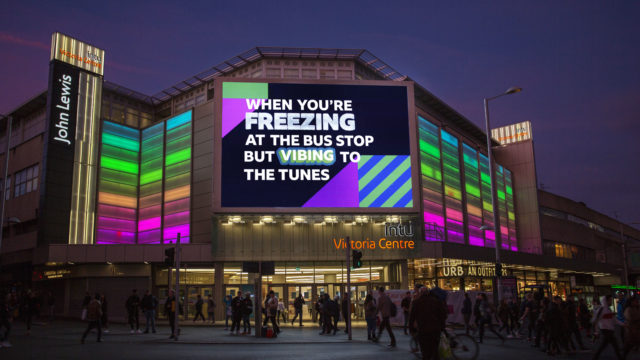
Digital Out-Of-Home (DOOH) is a return to old school advertising, combining the classic advertising experience with new technology and programmatic ad delivery. DOOH isn’t just roadside billboards anymore, digital advertisements can found just about anywhere now: elevators, gyms, airports, public transport, office buildings etc. Why is DOOH so popular?
According to MediaPost, DOOH is likely to become a more than $26 billion industry by 2023. Why? DOOH allows marketers to tailor their advertising to location, time of day, weather and traffic conditions, and more, making its reach and engagement highly effective.
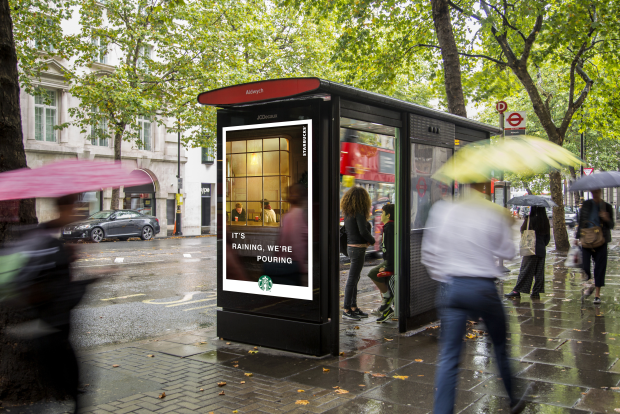
DOOH can be split into two main categories: large-format displays and digital place-based media. Large format displays are properly the main thing people think of when it comes to Digital display advertising. These displays are generally large format screens in high traffic areas such as highways and subways.
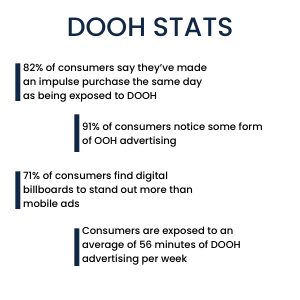
Digital place-based media are display screens located in “destinations.” These destinations are places that people are going to for a specific reason instead of just passing by.
What are the advantages of DOOH verses traditional out-of-home displays? DOOH allows marketers to update their messaging remotely and in real time. It also allows marketers to pick times of day and other factors when deciding when to show their ad.
Curious to know more about DOOH? Get in touch!
The 4 Keys To Success In This Environment

We know all the ways things have changed this year. We also know how much trends ,such as relying on digital marketing channels, has sped up. It makes us wonder what we can do to survive and adapt with these changes. Here are four keys to success.
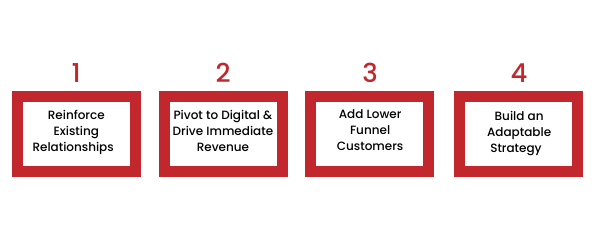
- Reinforce existing relationships. Which means reaching out and keeping in contact with existing and previous customers. Email and social channels are a great way to do this. Having up to date email and other information in your CRM is therefore, critical. Personalizing messages can help you stand out. It’s also important to figure out what channel your customers prefer to buy from you. Compare the current channels to what they preferred before this year to see the direction you should be focusing.
- Pivot to digital and drive immediate revenue. Without money coming in, it’s very hard to build a strategy for the future. Therefore, make sure your team and any tools or tech you need is ready to go.
- Acquire lower funnel customers. A lot of customers now are skipping the “passing interest” phase. They do research, find you, then buy. Making it easy for customers to find you when they are looking is important. Capitalize on lower funnel customers by knowing exactly how they got to you. One way to do that is by utilizing Pixel data. (Want more information on Pixels? Click here.)
- Position for success as this reverts back to “normal.” Have a plan. One thing to think about when building your plan is to create structures with the shifts in buying habits shift in mind. Test and experiment with different types of engagement now to see what channels to focus on on the future.
What do you think the key to successfully navigation the new marketing landscape is?
How To Make Personalized Ads Less Creepy
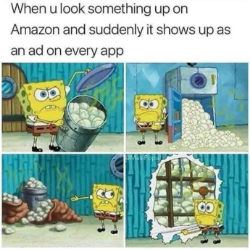
We all have heard the jokes about how our phones are listening. Our phones, and tablets, and watches, and computers, and smart speakers. Therefore, when we get super personalized ads it can feel a bit creepy. Like, how do they know my name? and I was literally just talking about this? So, how can we find the balance between personalized marketing and creepy personalization?
Why do we need personalized marketing in the first place?
In order to stand out in this digital world, brands need to communicate with their customers in a way that shows that the brand cares about the same things their customers do. This is especially true in social media. Social media can feel like customers have 1-on-1 relationships with the brand they follow. They can build relationships that feel personal.
Here’s a few ways to make personalized marketing effective and not jarring:
- Start with the information you have about your customers. It’s difficult to know what your customers want if you don’t know who they are. Look at your 1st party data. What are your most common demographics? What are their interests? How would they most like to be communicated with?
- Use the tools available. Marketing automation platforms and CRMs can do a lot of the heavy lifting when it comes to segmenting data. Many of them are designed to help create simple, personalized messages.

- Have a well thought out plan. Do you have a mapped-out customer journey? Knowing where in their journey your customers are makes a big difference in the types of personalization that will work for them. Think about nurturing. Pay attention to the details. Make sure that the little things that can be annoying such as, getting an abandoned cart email even though you’ve already come back to purchase it, are gone.Get rid of triggers that are connected to repurchasing products commonly only purchased once. (looking at you, toilet seat.)
- Know when to walk away. Keep your data clean. If someone has never opened an email it might be a good idea to take them off your list. Their data could skew your demographics and could make understanding what personalization your active customers need difficult.
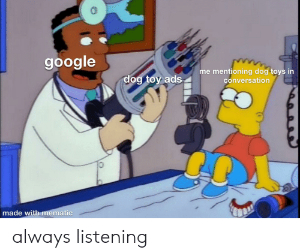
What’s the creepiest personalized advertising you’ve ever seen?
Can You Use Tracking Pixels On Your Website?

We talk a lot about pixels and pixel data a lot. Pixels, also called tracking pixels or marketing pixels are integral to any marketing strategy. Why?
Pixels are little snippets of code added to a website to create an invisible 1×1 pixel graphic. The pixel graphic captures information about your site’s visitors. Information such as when they visited your website, what type of device and the browser they used, what pages they looked at and how long they stayed on each page. Unlike cookies, pixels do not rely on browsers and instead send the information they’ve collected directly to servers. They cannot be disabled in the same way as cookies and can follow visitors across devices.
There are two main types of pixels: retargeting pixels and conversion pixels. They serve different but equally valuable purposes. If you have ever seen an ad on social media after just Googling the brand, then you’ve encountered a retargeting pixel. Retargeting pixels track website behavior then put an ad for a relevant product in the path of the user. They offer instant results because of the lack of downtime between your website and the ad. Unlike retargeting pixels, conversion pixels are usually triggered after or during a purchase. They track the path to the purchase and can connect revenue to specific ads. This helps to see what ads are working.
Why do you need a pixel? They provide insight into audiences, user behavior, and ad campaigns. The data provide can be crucial to putting the right ad in front of the right consumer at the right time. As well providing valuable analytics for campaigns.
Pixels are easy to install and use. And can be used across many different platforms.
With so many benefits, it’s easy to see why so many marketers rely on pixels and their data.
Want help setting up a pixel for your site? We can help. Get in touch here.
Customer Identity in the New Normal

We all acknowledge this this year has created a new normal in marketing. (and everything.) We have learned to be adaptable and prepare for the unexpected. Digital is king and therefore, data is more important than ever. However, we also know that Google is phasing out 3rd party cookies and that iOS 14 allows users to opt out of their IDFA (identifier for advertisers.) It’s a perfect storm of conflicting advertising trends. How do follow our audiences online without being able to identify them?
So, what information do we actually need about our customers? We be able to connect our first party data to the many different advertising personas and IDs that are going to replace cookies. We also need to be able to link personas across different channels. For example, we need to know that the “John” who is currently on our website is the same “John” who is in our CRM, and not another member of “John’s” household. Being able to identify known customers will be crucial to retargeting and analytics.
In order to accomplish this, you are going to need a robust CRM to manger all your first party data. You will also need data provider that is creative and understands how to apply the data.
Pixel data is going to be even more important in identifying customers that are on your website.
Getting consent from customers to use their data is also important, because as soon as someone starts to interact with your brand you should begin to build their profile. We still have over a year before Google starts to phase out cookies, so now is the time to prepare and gather as much 1st party data as possible!

